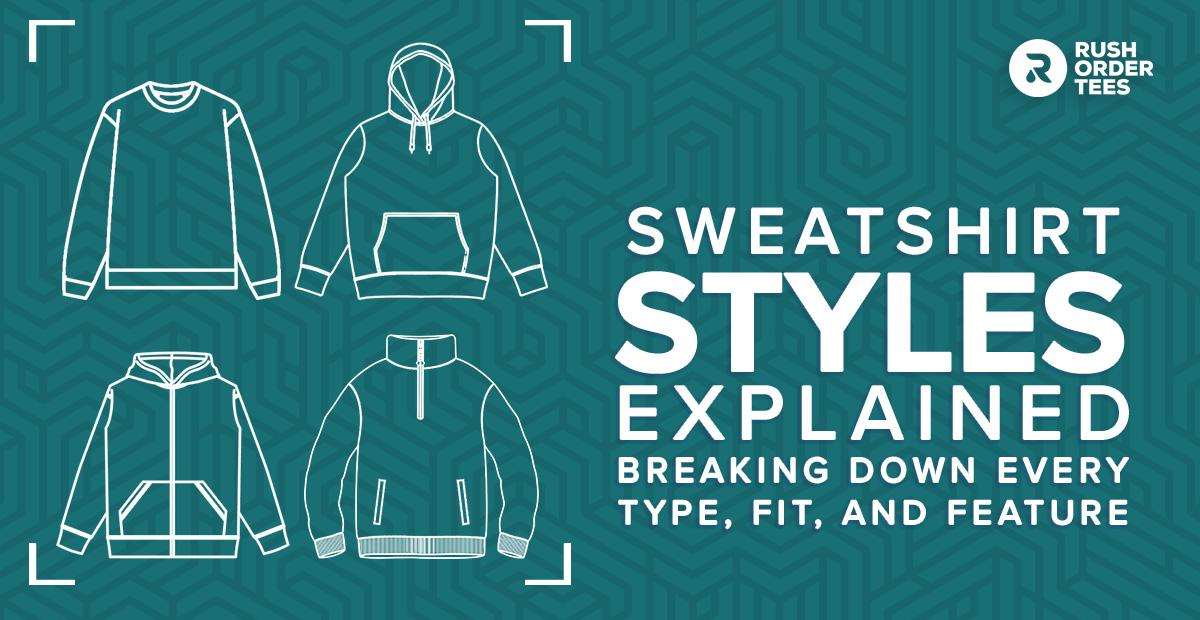

From the practice field to the high-fashion runway, the sweatshirt has come a long way. What started as purely functional athletic wear has evolved into one of the most versatile pieces in modern wardrobes, rivaling even the mighty t-shirt for the title of comfort-meets-style champion.
Whether weighing the merits of hoodies versus crewnecks, debating full-zip or quarter-zip, or diving into the world of fabric weights and fits, choosing the right sweatshirt style matters. With over two decades in custom apparel, we've learned a thing or two about what makes the perfect sweatshirt. Consider this your insider's guide to navigating the options and finding your ideal match—no sweat required.
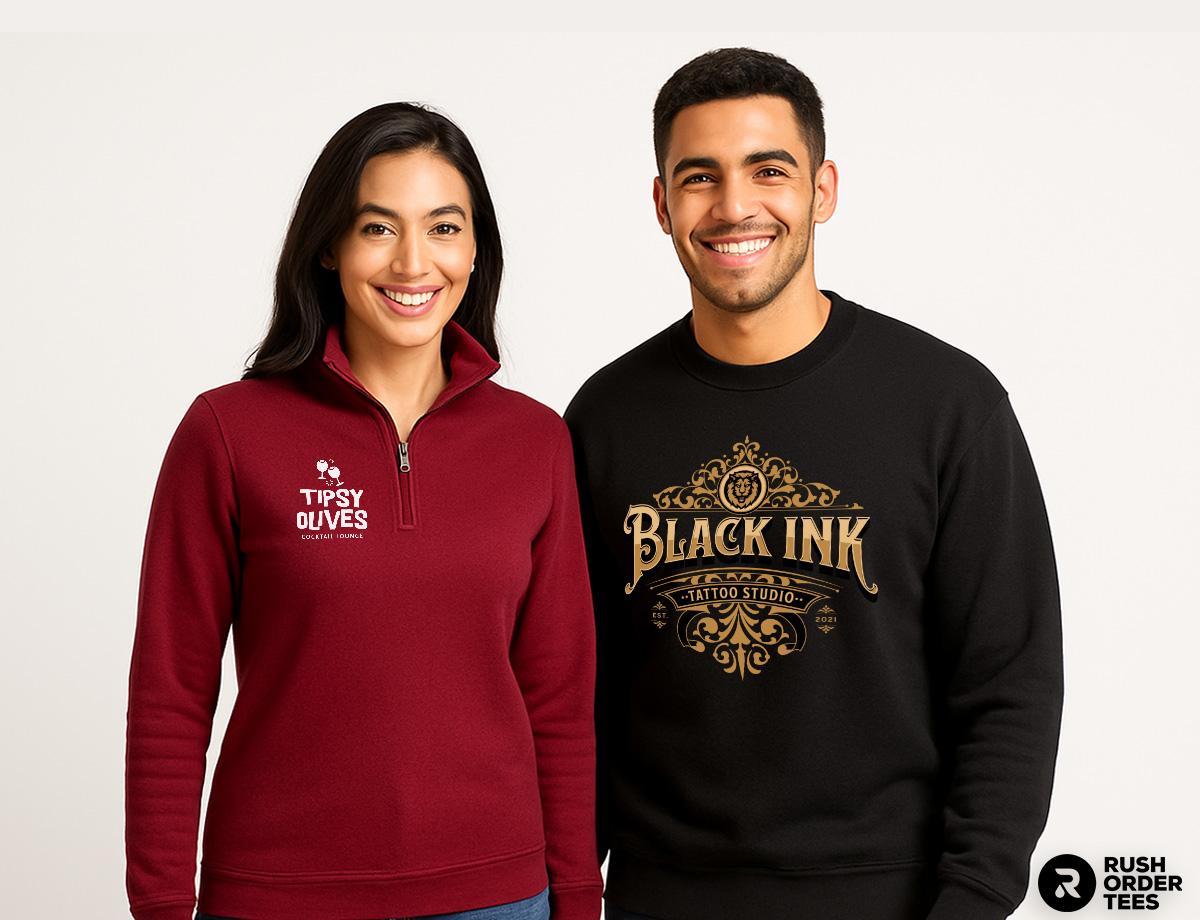
What is a Sweatshirt?
A sweatshirt is typically a long-sleeved, pullover garment made from heavy cotton or cotton-blend fabric, designed to be worn as an outer layer over lighter clothing like t-shirts or tanks. While most people picture the classic crewneck style, the term actually covers several variations that share that signature heavyweight construction.
Hoodies have become so popular that they created their own category (and retailers usually treat them that way), but they're technically a type of sweatshirt—one with an attached hood. The same goes for quarter-zip styles. What unites the whole family is that distinctive "sweatshirt material". The thick, often fleece-lined fabric that offers warmth without sacrificing breathability.
Origins
Ever wonder why they're called sweatshirts? The name comes honestly from their original purpose: helping athletes sweat it out in comfort. In 1926, Alabama football player Benjamin Russell Jr. got fed up with itchy wool jerseys during practice and pitched his father (who conveniently owned a clothing company) on creating a cotton alternative. The result? The first modern sweatshirt.
The design took off quickly. By 1930, Benjamin Russell Sr. had established the brand Russell Athletic, dedicated solely to producing these revolutionary garments. That small V-notch you still see around the collar of many crewnecks isn't just for show—it was originally engineered to collect sweat and prevent collar stretching after years of wear. Truly functional fashion.
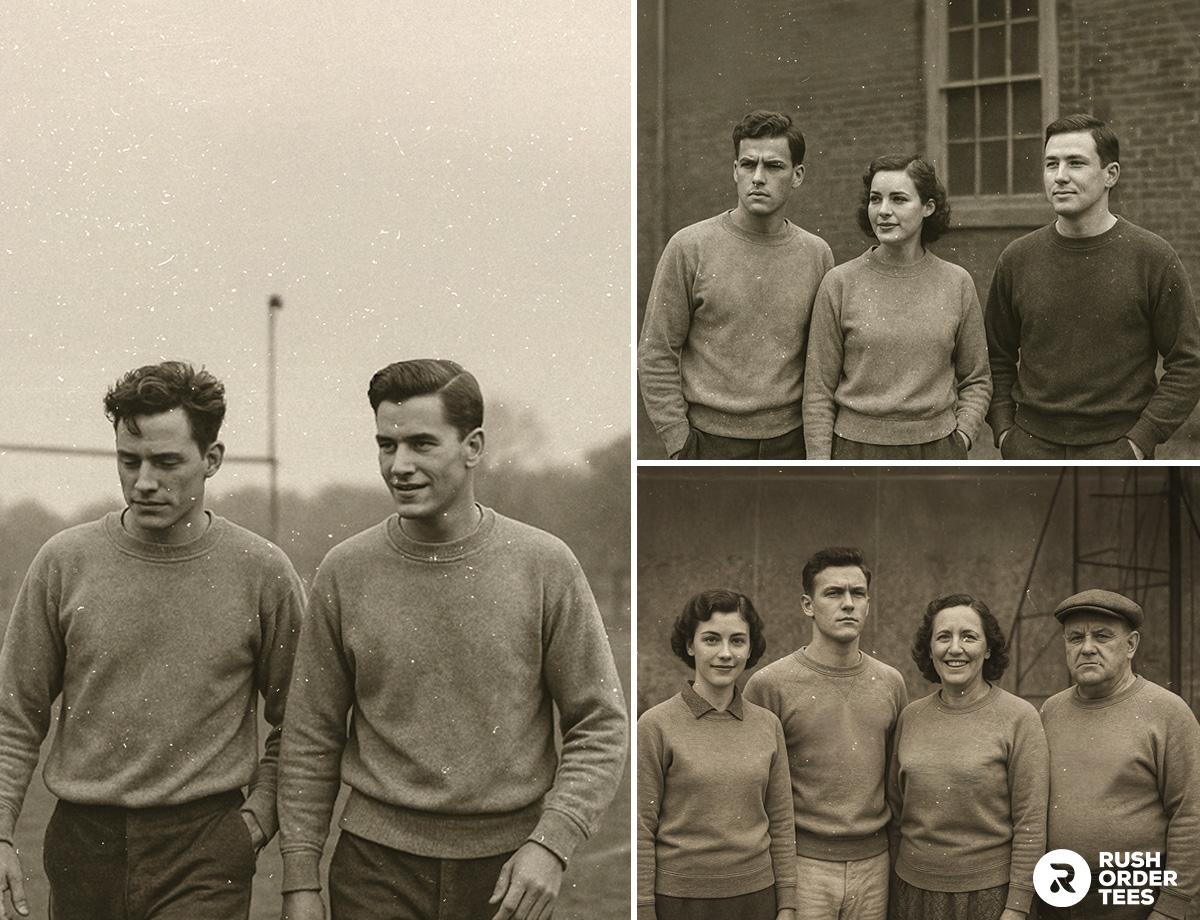
From those athletic roots, sweatshirts found their way into mainstream closets by the 1950s, exploding in popularity during the 70s and 80s. Hoodies carved out their own cultural significance through connections with hip-hop, skate culture, and campus life. Today, sweatshirts in all forms have completed their journey from pure athletic wear to versatile fashion pieces, embraced by everyone from high-end designers to everyday comfort seekers.
Common Materials
Cotton leads the pack as the most popular sweatshirt material, loved for its natural softness, breathability, and comfort. But today's sweatshirt world goes way beyond traditional cotton, especially when it comes to specialized styles like hoodies and quarter-zips. You'll find everything from durable polyester blends to performance fabrics engineered for moisture-wicking during workouts.
Quick note: While sometimes used interchangeably, sweatshirts and sweaters are distinct garments. Sweaters are typically knitted from finer yarns like wool or cashmere for a dressier look, while sweatshirts rock thicker, often fleece-backed fabrics for that perfect blend of comfort and durability. We go over the individual materials and their specific benefits later in this guide.
Popularity
Only t-shirts outrank sweatshirts as wardrobe essentials, with hoodies leading the charge. While most cold-weather gear gets packed away when temperatures rise, hoodies have transcended seasons to become year-round staples. Whether they're keeping you warm at dawn or just completing your streetwear look, these versatile layers refuse to be boxed into any single category.
Meanwhile, classic crewnecks are having a moment. The style has made a major comeback, especially in oversized cuts and premium materials. But the traditional fit maintains its appeal across every context—from gym sessions to casual Fridays to weekend lounging. This adaptability explains why you'll find sweatshirts filed under multiple categories, from activewear to athleisure to straight-up fashion.
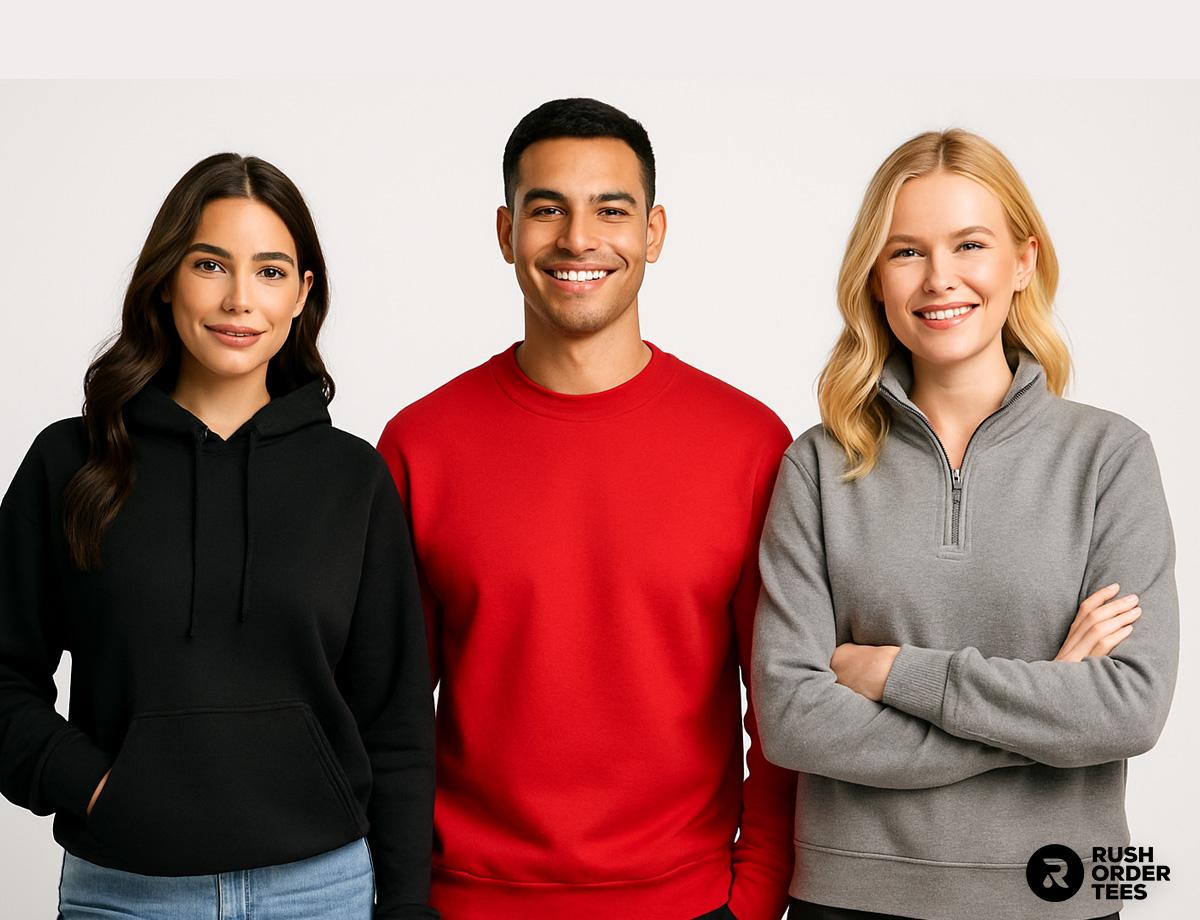
Market
The numbers don't lie: sweatshirts are big business. The global market for jerseys, sweatshirts, and pullovers is projected to hit $69.45 billion in 2025, with steady growth expected through 2029. By then, production volume will reach an astounding 2.9 billion pieces annually.
The United States leads the pack, and there's no sign of slowing down, especially with the rising demand for vintage-inspired styles as consumers chase that perfect blend of nostalgia and modern comfort. What started as a simple solution to itchy football jerseys has become one of fashion's heaviest hitters.
Sweatshirt Styles
Sweatshirts can be sorted into four main categories: crewnecks, pullover hoodies, zip-up hoodies, and quarter-zips. While these core styles are defined by their primary features (like hoods and zippers), each one opens up a world of possibilities through variations in fit, cut, and material. Each style also comes with its own considerations for customization—where you can print, how big your design can be, and what decoration methods work best. Let’s break it down.
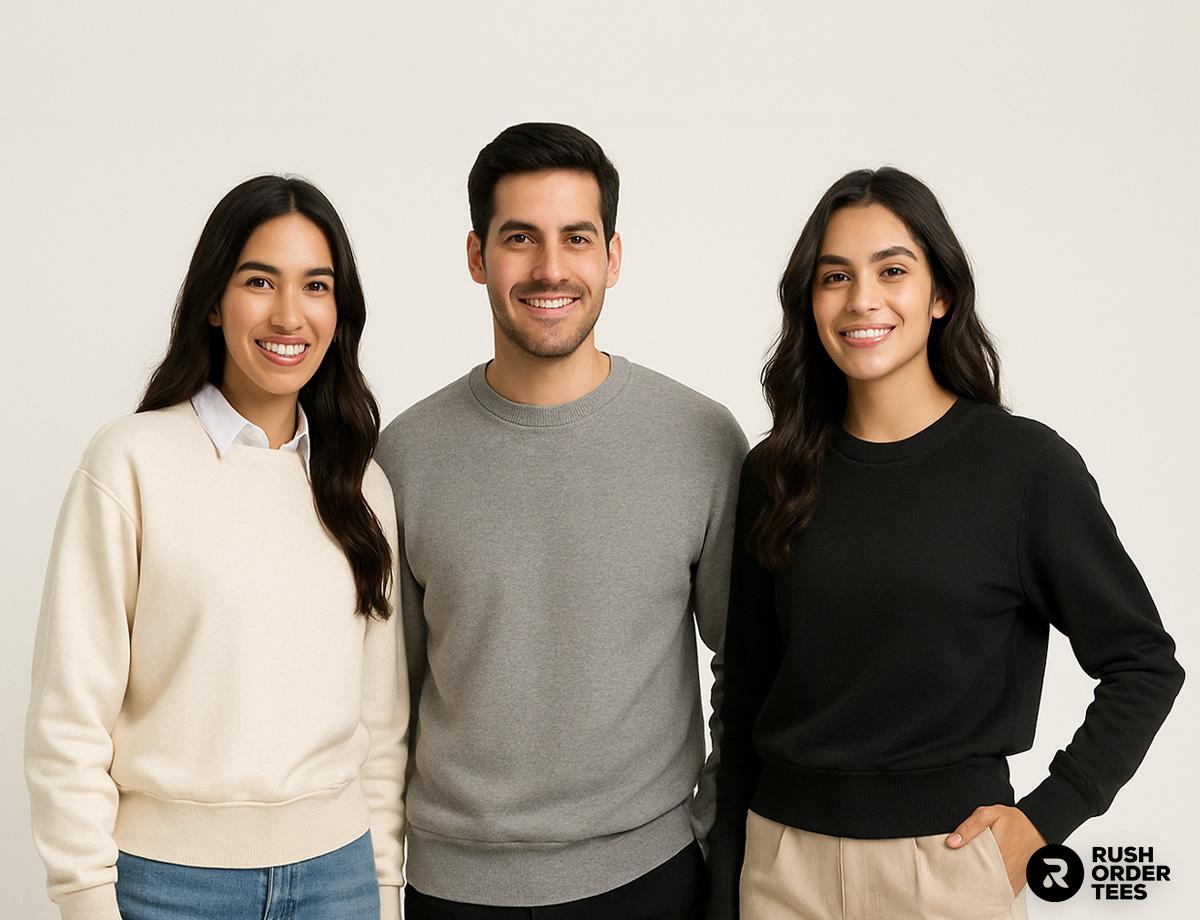
Crewneck Sweatshirts
The crewneck is sweatshirt style at its purest—no hood, no zippers, just that classic rounded neckline and a clean, timeless silhouette. Most feature ribbed cuffs and waistband to keep their shape, plus that signature V-stitch detail at the collar (a functional throwback to the style's athletic origins). The simplicity is exactly what makes it special.
Varieties: Crewnecks typically stick to what works: heavyweight cotton or cotton-poly blends that deliver real substance. You'll find some modern twists like raglan sleeves for better mobility, women's cuts for a more tailored fit, and trendy cropped or oversized versions. But the core design hasn't needed much improvement since its invention.
Use cases: From weight rooms to workplaces, crewneck sweatshirts enjoy possibly the broadest appeal of any style. They're a natural fit for athletic training, casual everyday wear, and even business casual settings when done right. The oversized look has gained serious fashion cred lately, while classic fits maintain their workhorse status. Plus, they usually run cheaper than hoodies—always a bonus.
Customization: Crewnecks are a decorator's dream. With no hood or pocket to work around, you've got maximum real estate for designs. The flat front and back surfaces are perfect for everything from small logos to full-chest artwork, and the sleeves are fair game too. The substantial fabric takes well to screen printing, DTF, and embroidery, making these versatile pieces for any custom apparel project.
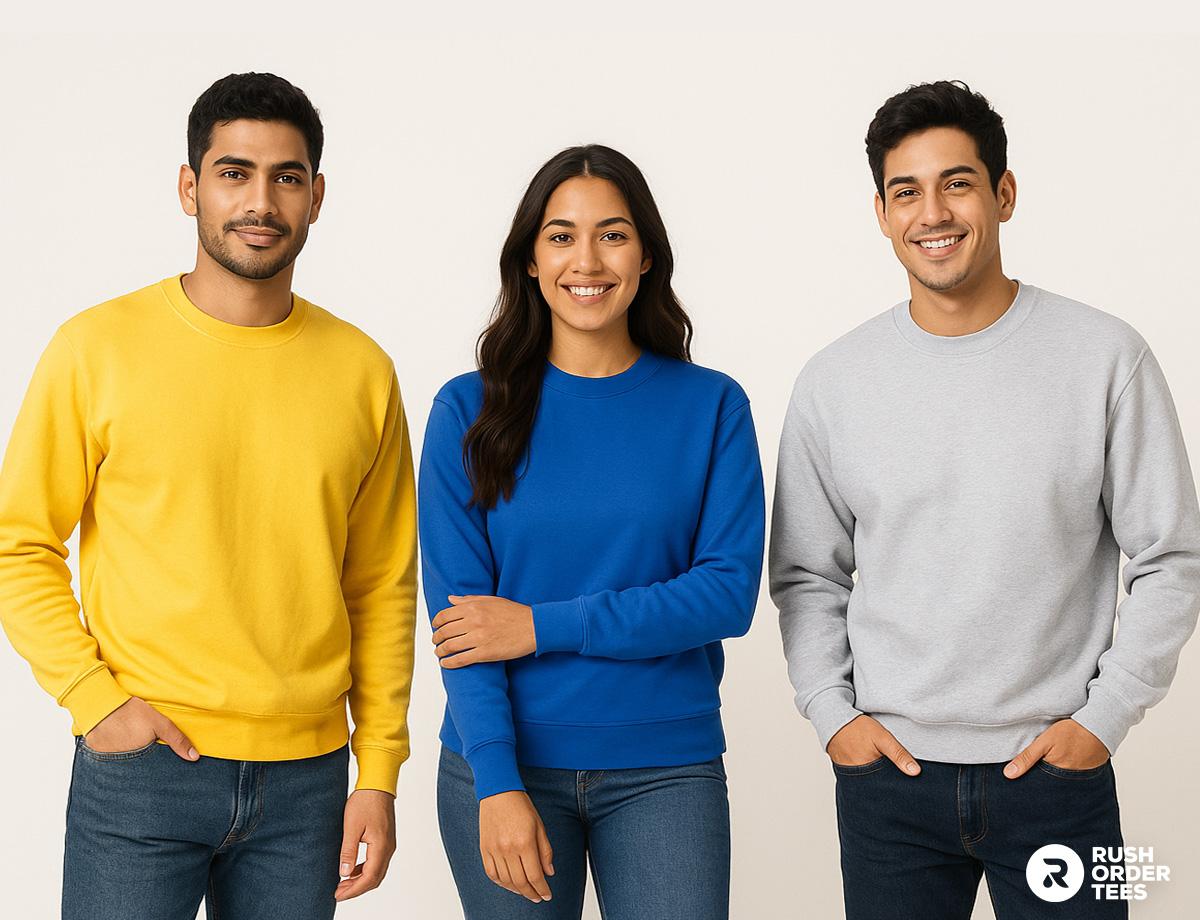
Product Examples
- Budget: Hanes Ultimate Cotton Fleece Sweatshirt (F260) - A classic cotton-blend sweatshirt featuring 90% cotton, 10% polyester construction at 9.7 oz weight. Made with sustainably sourced USA cotton and includes low-pill PrintPro® XP fabric. Double-needle coverseaming and cotton/polyester/spandex blend in collar and cuffs for comfort. 20 colors and sizes S-3XL.
- Moderate: Threadfast Apparel Unisex Ultimate Sweatshirt (320C) - An eco-conscious sweatshirt made with 65% cotton, 25% recycled polyester, and 10% polyester at 8.5 oz weight. Features a retail fit with ribbed neck, cuff and hem. Available in 10 colors and sizes XS-4XL.
- Premium: Bella+Canvas Sponge Fleece Crewneck Sweatshirt (3901) - Super soft sweatshirt made from 50% poly, 37.5% combed and ringspun cotton, and 12.5% rayon at 8.2 oz weight. Features retail fit with raglan sleeves and 1x1 ribbed cuffs and waistband. Available in 36 colors and sizes XS-3XL.
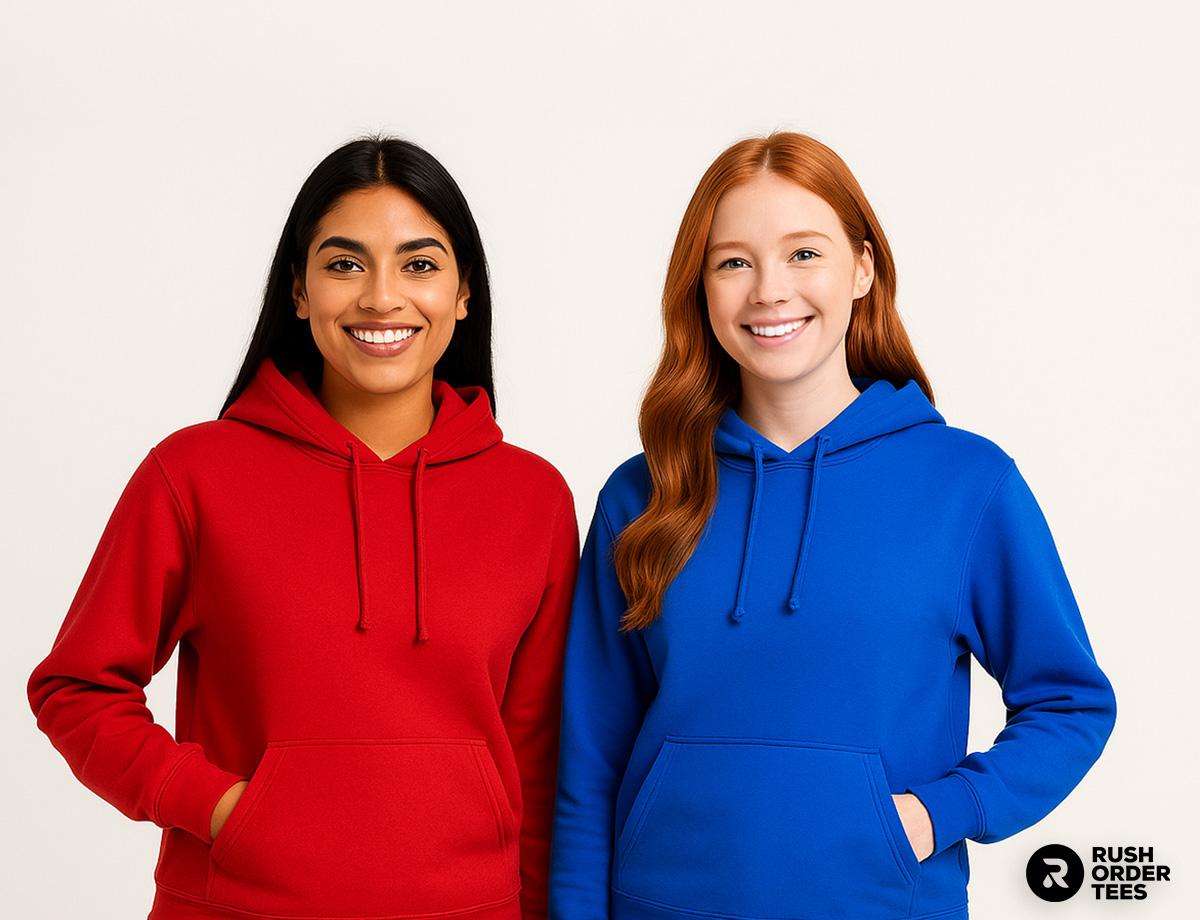
Pullover Hoodies
Most people picture the pullover hoodie when they think of a hooded sweatshirt: that signature item with drawstrings, a kangaroo pocket in the front, and a simple pull-on design. It's the go-to choice for comfort and casual style, striking a perfect balance between cozy and cool. The design is arguably the most iconic piece of casual wear ever created.
Varieties: While the classic style remains king, pullovers have evolved to include plenty of modern variations. You'll find lightweight versions perfect for spring and fall, streamlined cuts without front pockets, and fashion-forward options like cropped cuts for women and oversized fits for that streetwear vibe. Some even feature premium touches like metal-tipped drawstrings or split-hem designs.
Use cases: Pullovers shine as everyday wear, but they're especially clutch for cold weather. The unbroken front panel keeps warmth in better than zip-ups, making them ideal for winter layering or braving those early morning workouts. They've also become staples in everything from workwear to high fashion—versatile enough to dress up or down depending on the style and material.
Customization: Pullovers present some unique opportunities and challenges. That front pocket limits your main print area, but wider designs like team names or horizontal logos work beautifully across the chest. Many decorators focus on bold back designs or get creative with pocket prints and hood accents. Just remember the pocket creates a natural boundary for your artwork—anything too tall will look cramped.
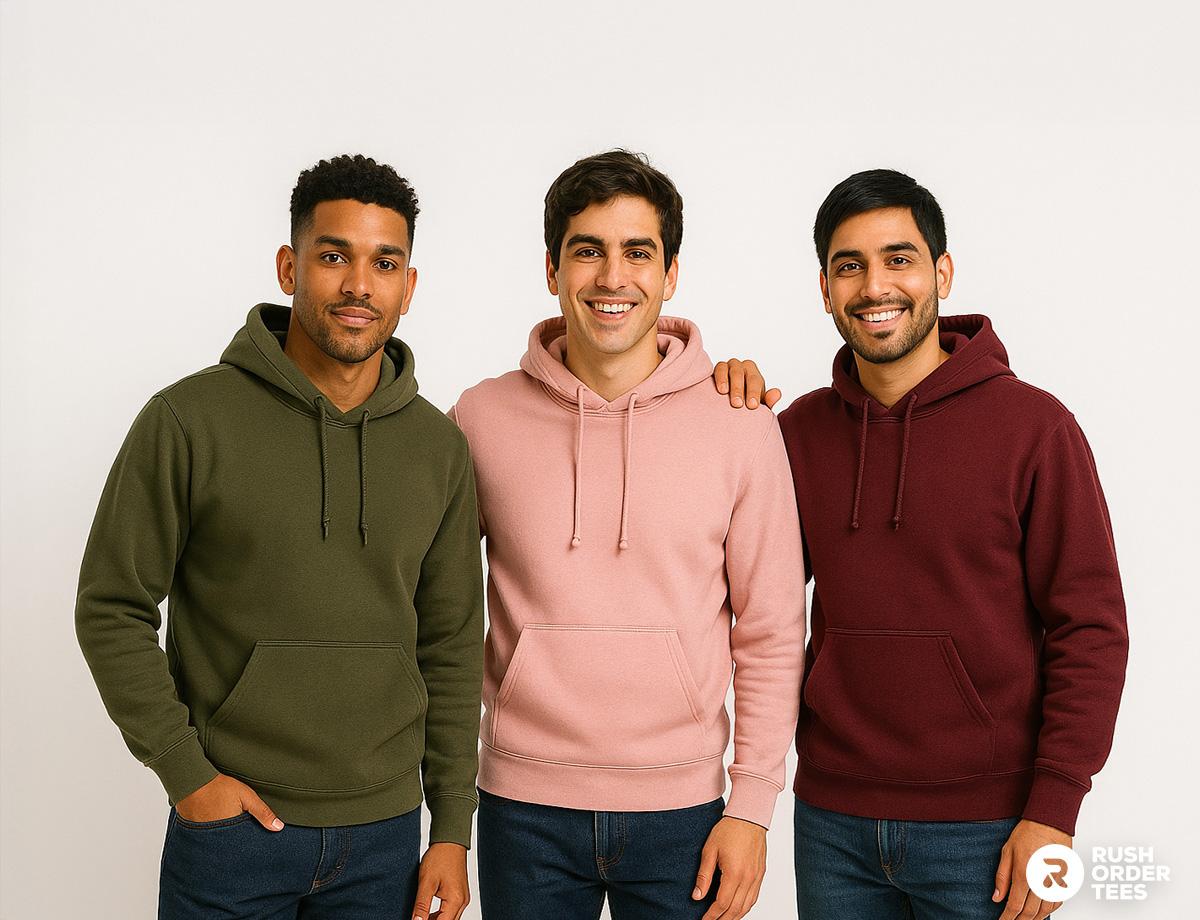
Product Examples
- Budget: Gildan Softstyle Hoodie (SF500) - A heavyweight hoodie constructed from 80% ring-spun cotton and 20% polyester at 8.4 oz weight. Features jersey-lined hood, flat drawcords, and double-needle hem stitching. Available in 25 colors and sizes S-5XL.
- Moderate: Bella + Canvas Sponge Fleece Hoodie (3719) - Ultra-soft hoodie made from 52% Airlume combed cotton and 48% polyester fleece at 8 oz weight. Features retail fit with pouch pockets and ribbed cuffs and waistband. Available in 60 colors and sizes XS-3XL (plus youth sizes).
- Premium: Carhartt Midweight Hooded Sweatshirt (CTK121) - Durable workwear hoodie made from 50% cotton, 50% polyester at 10.5 oz weight. Features triple-stitched main seams, front hand warmer pocket, and spandex-reinforced cuffs and waistband. Available in 7 colors and sizes S-4XL.
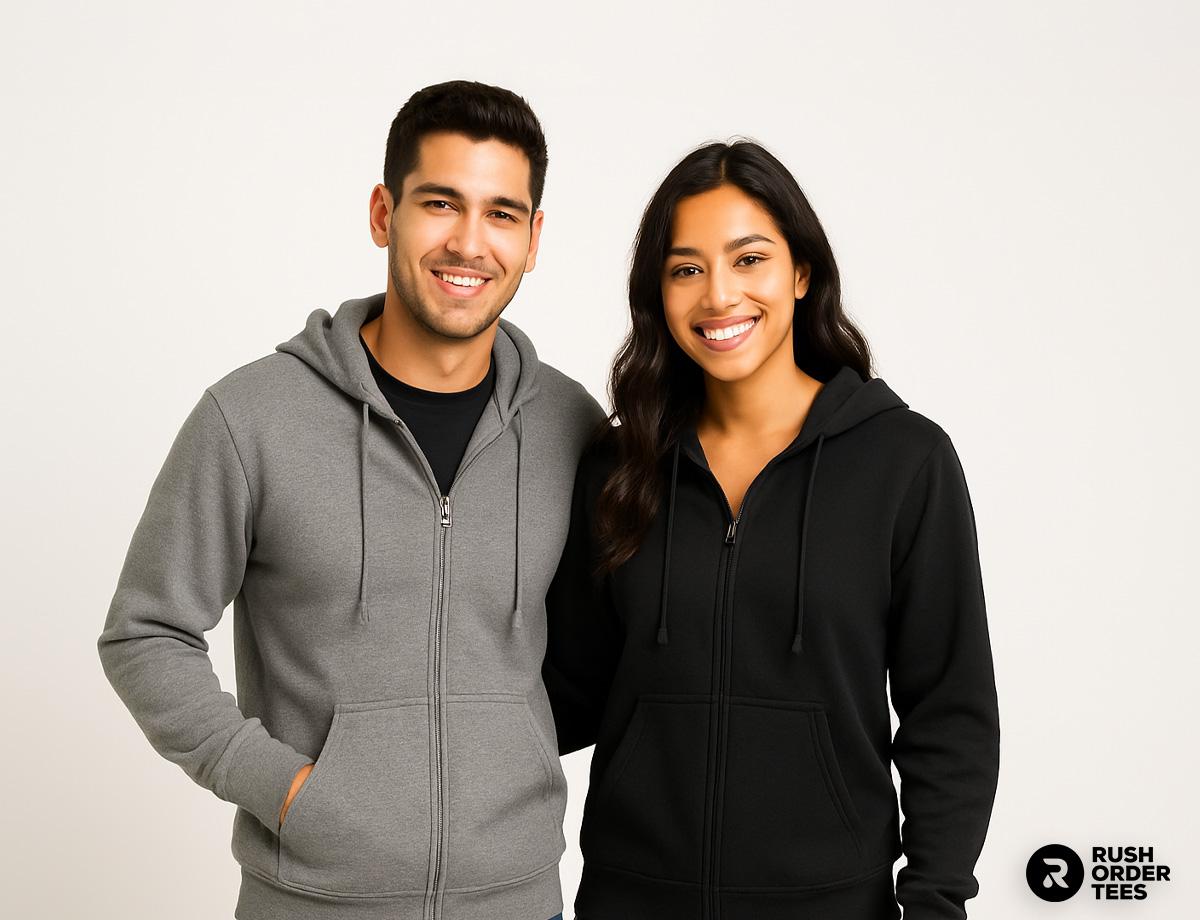
Zip-Up Hoodies
The zip-up hoodie adds versatility to the classic hoodie formula with its full-length zipper and dual front pockets. This simple addition transforms the garment, making it easier to throw on or off and adjust for temperature changes. The split front creates a more structured look than pullovers, with clean lines that can actually dress up nicely.
Varieties: Lightweight versions work great as spring jackets, while sherpa-lined options bring serious warmth to winter wardrobes. Some premium styles feature special construction like zipper covers or "kissing" zippers that allow for front printing, and you'll find everything from minimalist no-pocket designs to tech-heavy versions with hidden media compartments.
Use cases: Zip-ups tend to lean more fashion-forward than their pullover cousins. They layer beautifully under jackets (from bombers to blazers), and the adjustable front makes them more adaptable to different settings. While you'll still see plenty at the gym, zip-ups have found their niche as casual outerwear that can bridge the gap between athletic and fashion wear.
Customization: Most decorators avoid the zipper divide and focus on left chest logos or full back designs. While printing across the zipper is possible with special techniques or design accommodations, it's usually simpler and more effective to work with the natural split front.
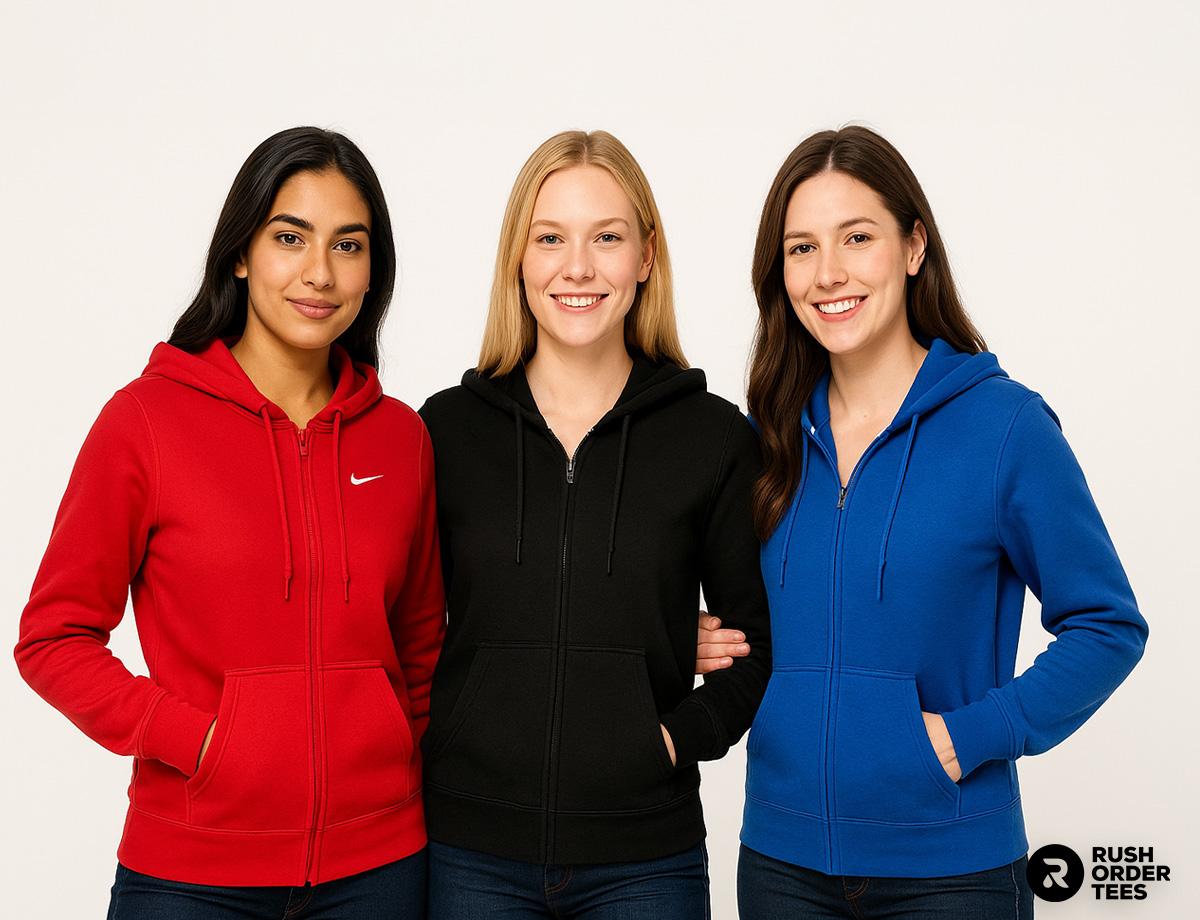
Product Examples
- Budget: Next Level Unisex Zip Up Hoodie (9602) - Lightweight hoodie made from 80% cotton, 20% polyester at 7.4 oz weight. Features sueded jersey-lined hood, contrast neck binding, and 1x1 ribbed cuffs and waistband. Available in 6 colors and sizes XS-3XL.
- Moderate: Bella + Canvas Tri-blend Fleece Zip Up Hoodie (3909) - Plush zip-up made from 50% polyester, 37.5% cotton, and 12.5% rayon at 8.2 oz weight. Features pre-laundered triblend sponge fleece with pouch pockets. Available in 3 colors and sizes XS-2XL.
- Premium: Nike Club Fleece Sleeve Swoosh Full-Zip Hoodie (NKDR1513) - Premium zip-up made from 72% cotton, 20% polyester, and 8% organic cotton at 8.2 oz weight. Features jersey-lined hood, dyed-to-match drawcords, and embroidered Swoosh on sleeve. Available in 6 colors and sizes XS-4XL.
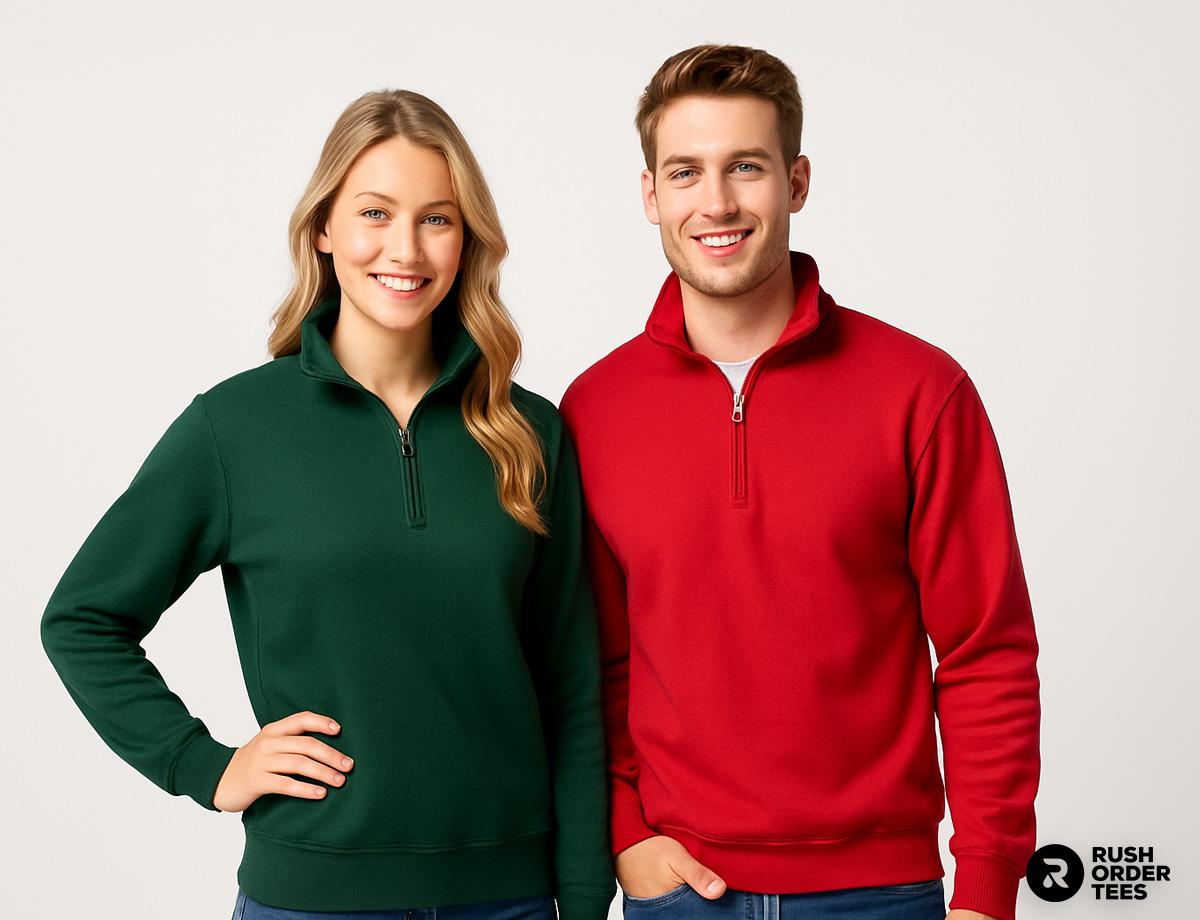
Quarter-Zip Sweatshirts
The quarter-zip sweatshirt strikes a perfect balance between casual comfort and polished style. With its partial zipper and raised collar, it offers more refinement than a standard crewneck while maintaining that essential sweatshirt comfort. It's the style that successfully bridges the gap between athletic wear and business casual.
Varieties: You'll find quarter-zips in an impressive range of materials and constructions. From lightweight performance blends perfect for golf to heavyweight fleece ready for winter, this style adapts well to different needs. Some feature kangaroo pockets like hoodies, others opt for more sophisticated zippered chest pockets. Premium details like contrast panels, raglan sleeves, and technical fabrics have made this category a playground for innovation.
Use cases: While other sweatshirt styles dominate gyms and streetwear, quarter-zips have carved out their niche in professional settings. They're a staple of business casual wardrobes and corporate culture, offering a put-together look that doesn't sacrifice comfort. This elevated positioning typically comes with a higher price point, but the versatility and polish often justify the investment.
Customization: Quarter-zips tend to keep things understated. An embroidered left chest logo is the go-to choice, perfectly matching the style's more refined aesthetic. While some lightweight versions can handle small prints, most decorators stick to embroidery—it adds that extra touch of quality that quarter-zip wearers tend to appreciate.

Product Examples
- Budget: Jerzees Cadet Collar Quarter Zip Pullover (995M) - Classic quarter-zip made from 50% cotton, 50% polyester at 8 oz weight. Features high-stitch density fabric, cadet collar, and double-needle cover stitching. Available in 12 colors and sizes S-3XL.
- Moderate: Hanes ComfortWash Quarter-Zip (GDH425) - Garment-dyed quarter-zip made from 80% USA-grown cotton and 20% polyester at 7.2 oz weight. Features relaxed fit with double-needle stitching and two-ply self-fabric collar. Available in 6 colors and sizes S-3XL.
- Premium: Adidas Performance Textured Quarter-Zip (A295) - Athletic quarter-zip made from 91% recycled polyester and 9% elastane at 8.1 oz weight. Features UPF 50+ protection, right arm zipper pocket, and textured front body design. Available in 4 colors and sizes S-4XL.
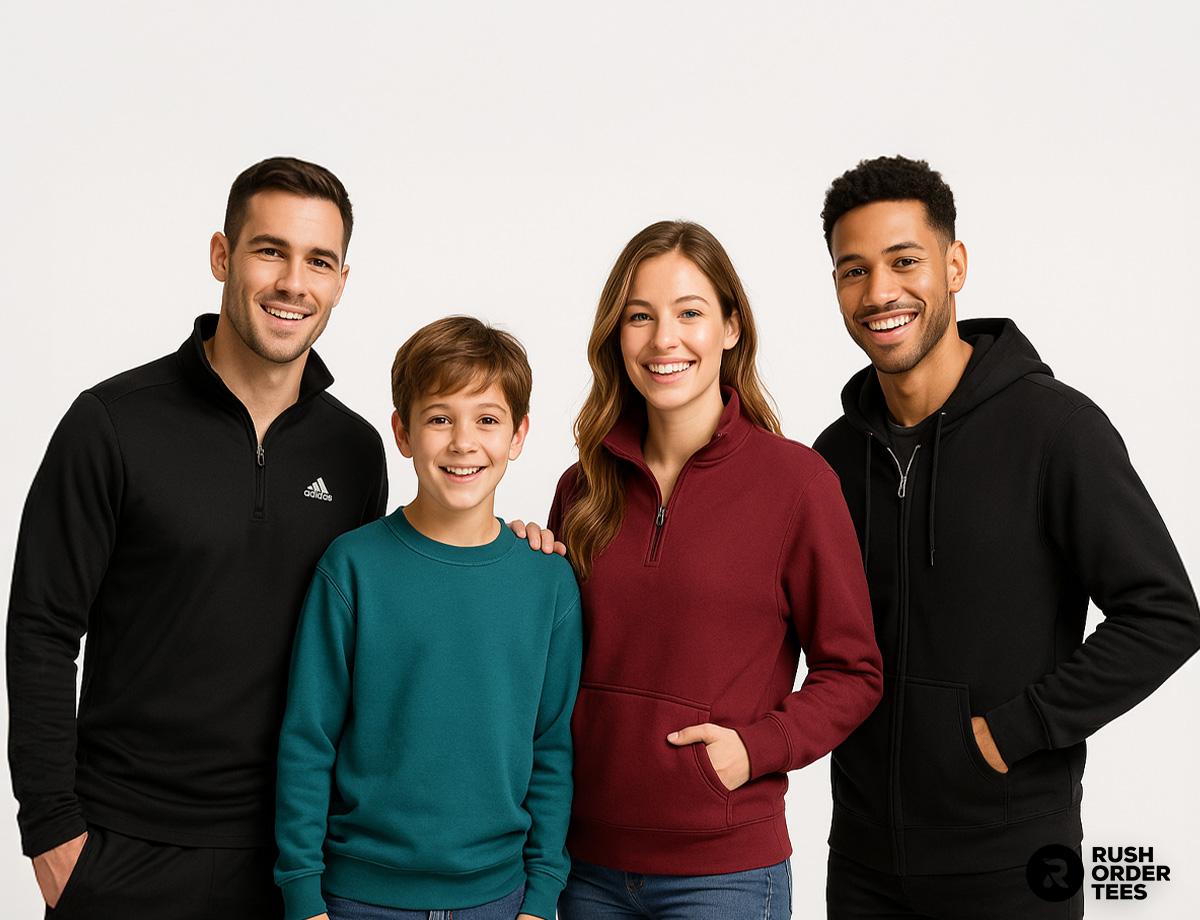
Cuts and Fits
Beyond the main sweatshirt styles, you'll find various cuts and fits that fine-tune the look and feel of each garment. Keep in mind that not every brand offers all these variations—some stick to standard options while others experiment with trending cuts and specialty fits. Here's a quick rundown of common variations you might encounter:
- Tall: Extended body and sleeve lengths designed for taller individuals, ensuring proper coverage without having to size up in overall width. See our selection of tall sweatshirt options.
- Women's: Features a more contoured silhouette with smaller shoulders, tapered waist, and subtle flare at the hips. See our full selection of women’s sweatshirts.
- Youth: Sized and proportioned specifically for kids, usually with similar styling to adult versions. Check out our selection of kid’s sweatshirts.
- Unisex: The standard fit most brands default to, with a classic straight cut that works for most body types. Often the men’s cut and unisex are interchangeable.
- Semi-Fitted: A slimmer, more tailored cut that removes excess fabric without going tight—popular in fashion-forward styles. Also known as fashion fit or slim fit.
- Relaxed Fit: Offers more room than standard fits, particularly in the chest and arms, for comfortable layering or a looser feel. Many items standard fit are naturally relaxed.
- Loose Fit: The intentionally oversized look that's currently trending, with extra fabric throughout for that slouchy, fashion-forward vibe. You can also just order larger sizes to achieve this look.
- Cropped: Cut shorter to hit at or above the waist, typically in women's styles for a contemporary look. Check out our selection of cropped sweatshirts.
- Short-sleeve and sleeveless: Yes, sleeveless hoodies exist—think basketball warmups or summer streetwear. See our selection of short-sleeve hoodies.
- Raglan Sleeve: Features diagonal seams from the collar to the underarm instead of traditional shoulder seams, offering better mobility.
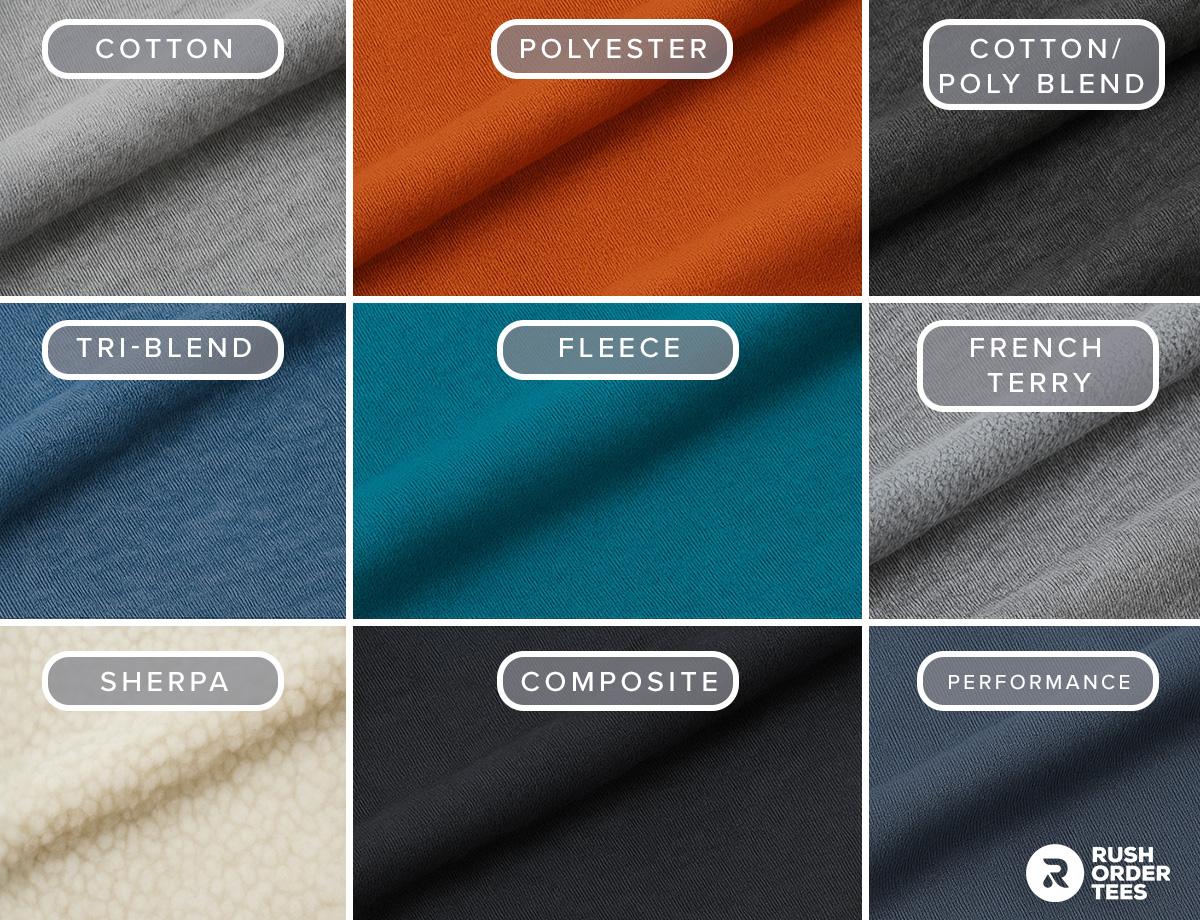
Materials and Fabrication
Understanding sweatshirt materials goes beyond just checking the label—different materials and fabric types can significantly impact everything from comfort to durability to price. Pay special attention to fabric weight when shopping: lightweight options (under 7 oz) work great for warmer weather, midweight (7-9 oz) offers year-round versatility, and heavyweight (over 9 oz) brings warmth for winter. Here's a breakdown:
Primary Materials
- Cotton: The classic choice and customer favorite for its natural softness and breathability, and gets softer with each wash but can shrink if not pre-shrunk.
- Polyester: Delivers superior durability and wrinkle resistance, plus better color retention than cotton. Ideal for frequent wear. Keep in mind it can be irritant for those with sensitive skin.
- Cotton/Poly Blend: The best of both worlds—cotton's comfort meets polyester's durability, typically in 50/50 or 80/20 ratios. Some styles have the heathered look.
- Tri-Blend: Adds rayon to the cotton/poly mix for extra softness and improved drape. Premium feel with slightly higher price point. Typically has the heathered look.
Fabric Types
- Fleece: A fabric style where one side is brushed to create a soft, fuzzy surface that traps air for warmth. Can be made from cotton, polyester, or blends. The most common “sweatshirt material”.
- French Terry: Characterized by a smooth face and looped back. Can be cotton, polyester, or blends, with natural moisture-wicking properties from its unique knit structure. Lighter than fleece.
- Sherpa: Ultra-cozy synthetic fleece designed to mimic wool. Typically polyester-based, used either as lining or as the main fabric. Heavier than fleece.
Specialty Categories
- Composite: Combines different materials strategically, like moisture-wicking panels in high-sweat areas, or just for unique style and upscaled look.
- Eco-Friendly: Made from recycled materials or organic cotton and eco-friendly manufacturing processes. This is a growing category as sustainability becomes more important.
- Performance: Synthetic fabric engineered for athletic use with moisture-wicking properties and quick-dry technology. Usually polyester-based. See our selection of performance sweatshirts.
Care and Maintenance
While sweatshirts are built tougher than your average t-shirt, a little care goes a long way in keeping them looking fresh. Proper maintenance not only extends their life but also preserves that perfect broken-in feel you've worked so hard to achieve.
The basics of sweatshirt care are simple: wash in cool water, avoid harsh detergents, and turn them inside out to protect prints or embroidery. Stick to low heat when drying to prevent shrinkage, or better yet, hang dry your premium pieces. For delicate items or anything with special details, consider a mesh laundry bag for protection. And always check those care labels—some performance materials need special attention.
When it comes to storage, you've got options. Folding prevents stretching and keeps garments neat. For structured pieces like quarter-zips or premium hoodies, hangers work well too. Just avoid cramming them into overcrowded drawers or letting them pile up on that one chair we all have (you know the one).
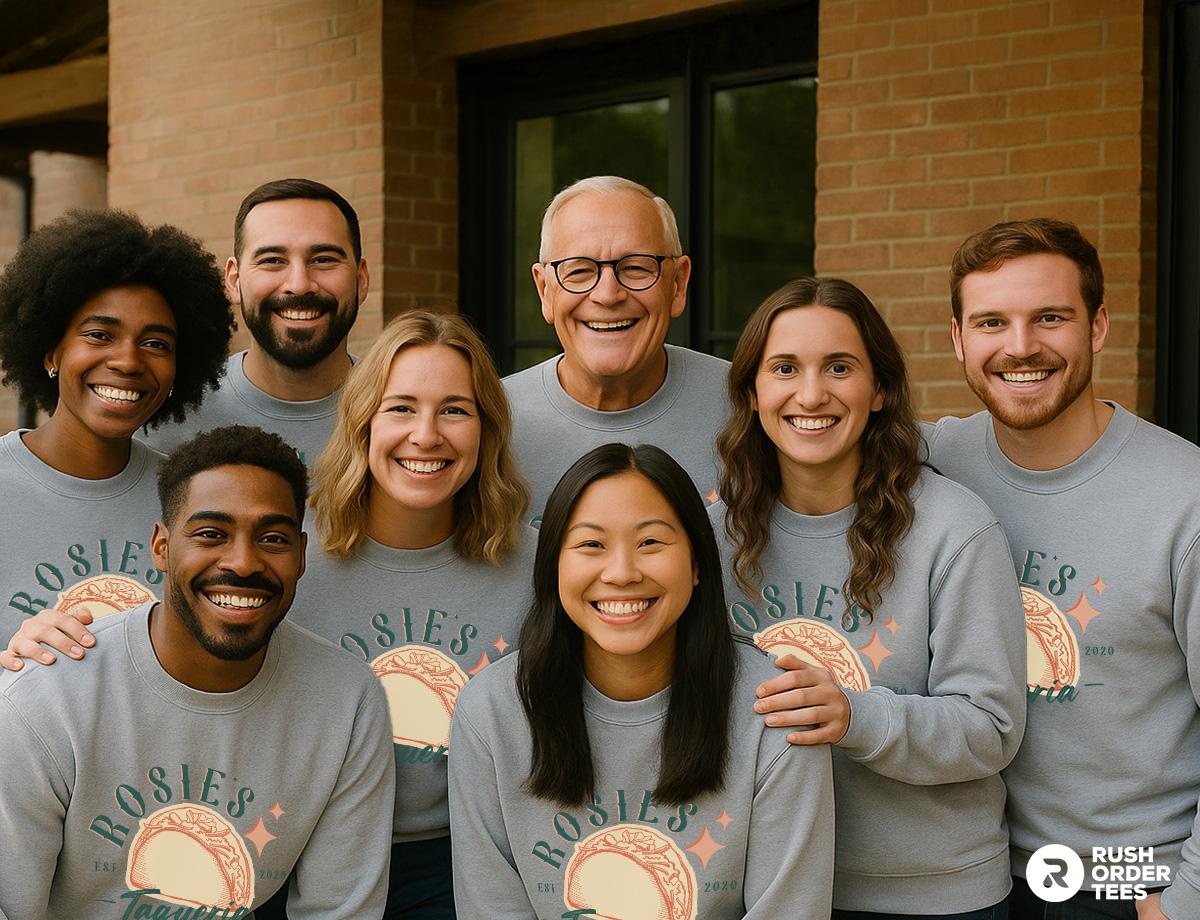
Your Perfect Layer: The Right Sweatshirt Makes All the Difference
From classic crewnecks to trendy hoodies, each sweatshirt style brings something unique. Understanding these differences—whether it's the warmth of a pullover hoodie, the versatility of a zip-up, or the polish of a quarter-zip—helps you make smarter choices for your specific needs.
When you're ready to create your perfect custom sweatshirt, our team at Rush Order Tees knows these styles inside and out, and we're here to help you choose the right one for your needs—whether you're ordering for yourself, your team, or your brand. With options from leading manufacturers and expert decoration services, we'll make sure your sweatshirt looks as good as it feels.

About the Author
A graduate of the Multimedia program at the University of the Arts in Philadelphia, Imri Merritt is an industry veteran with over 20 years of graphic design and color separations experience in the screen printing industry.
